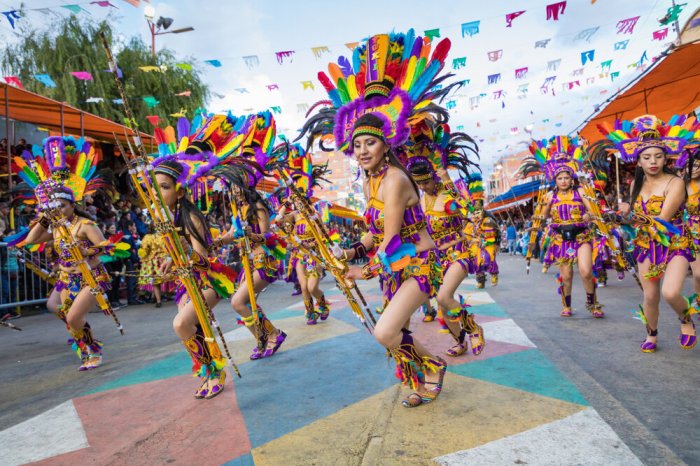Ancient Temple Tours and Heritage Trails offer a captivating journey through time, exploring the architectural marvels and rich history of ancient civilizations. This exploration delves into the growing popularity of these tours, examining global trends, demographic interests, and diverse marketing strategies employed by tour operators. We’ll also delve into the design and development of sustainable heritage trails, showcasing successful initiatives and best practices for accessibility.
Furthermore, we’ll analyze the architectural styles and historical significance of ancient temples, considering the impact of tourism on their preservation. The discussion will extend to experiential travel, including luxury options and the innovative use of technology to enhance the visitor experience.
From crafting immersive itineraries and marketing campaigns to highlighting the unique selling points of luxury accommodations and transportation, this comprehensive overview aims to provide a holistic understanding of the Ancient Temple Tours and Heritage Trails sector. We will explore the various facets of this growing niche in the travel industry, providing insights for both travelers and industry professionals alike.
Ancient Temple Tours
Ancient temple tours represent a significant and growing sector within the global tourism industry. The allure of exploring ancient civilizations, breathtaking architecture, and rich cultural heritage draws millions of visitors annually to sites across the globe, contributing significantly to local economies and cultural preservation efforts. This exploration will delve into the current popularity, emerging trends, demographics, and marketing strategies within this fascinating niche.
Popularity and Regional Variations of Ancient Temple Tours
The popularity of ancient temple tours varies considerably depending on the region and specific site. Southeast Asia, particularly countries like Thailand (with Angkor Wat), Cambodia, and Myanmar, consistently rank highly, attracting large numbers of international and domestic tourists. Similarly, regions in India, with sites like the Taj Mahal and numerous temples, experience substantial tourism. South America sees significant interest in sites like Machu Picchu in Peru, while the Mediterranean region (Greece, Italy, Egypt) remains a perennial favorite, attracting visitors drawn to the classical world’s legacy.
However, the level of tourism fluctuates based on factors like political stability, infrastructure, marketing efforts, and global events. For instance, the impact of the COVID-19 pandemic resulted in a sharp decline in tourism globally, impacting even the most popular sites. The subsequent recovery has been uneven, with some areas recovering more quickly than others.
Emerging Trends in Ancient Temple Tourism
Three significant trends are shaping the future of ancient temple tourism. Firstly, there’s a growing emphasis on sustainable and responsible tourism. This involves minimizing the environmental impact of tourism, supporting local communities, and preserving the historical integrity of the sites. Secondly, experiential tourism is gaining traction, with a focus on immersive experiences that go beyond simply sightseeing. This includes things like guided meditation sessions within temple complexes, workshops on ancient crafts, or overnight stays in heritage accommodations near the sites.
Thirdly, the use of technology is transforming the visitor experience. Virtual reality tours, augmented reality overlays providing historical context, and interactive mobile apps are becoming increasingly common, enhancing visitor engagement and accessibility.
Demographics of Ancient Temple Tour Participants, Ancient Temple Tours and Heritage Trails
The demographic profile of individuals interested in ancient temple tours is diverse, though certain trends are observable. A significant portion comprises older adults (50+), often retired individuals with more disposable income and time for travel. However, there’s a growing segment of younger travelers (25-49), particularly those interested in cultural experiences and adventure tourism. Families with children also represent a substantial portion of visitors, particularly at sites offering educational programs or family-friendly activities.
Furthermore, the increasing accessibility of travel and information has led to a more globally diverse range of visitors, reflecting a wider appreciation for different cultures and histories.
Marketing Strategies of Ancient Temple Tour Operators
Tour operators employ diverse marketing strategies to attract visitors. Some focus on luxury travel packages, offering high-end accommodations and personalized services to appeal to affluent travelers. Others target budget-conscious travelers with affordable group tours or independent travel packages. Digital marketing, including social media campaigns, targeted advertising, and website optimization, plays a crucial role in reaching potential customers.
Many operators collaborate with travel agencies and online booking platforms to expand their reach. Finally, some emphasize the unique selling points of their tours, highlighting aspects like exclusive access to sites, expert guides, or culturally immersive experiences to differentiate themselves from competitors. The choice of marketing strategy often depends on the target audience and the overall brand positioning of the tour operator.
Ultimately, the exploration of Ancient Temple Tours and Heritage Trails reveals a vibrant and evolving sector. The successful integration of sustainability, accessibility, and innovative technologies promises to enrich the visitor experience while safeguarding these invaluable historical and cultural sites for future generations. Whether focusing on luxury experiences or accessible exploration, the future of this industry lies in responsible and engaging tourism that balances preservation with appreciation.
Essential Questionnaire: Ancient Temple Tours And Heritage Trails
What is the average cost of an ancient temple tour?
Costs vary widely depending on the location, duration, level of luxury, and included activities. Expect a range from budget-friendly options to highly exclusive, luxury packages.
What are the best times of year to visit ancient temples?
The ideal time depends on the location’s climate. Generally, avoid peak seasons for better value and fewer crowds. Research specific locations for optimal weather conditions.
Are guided tours necessary for visiting ancient temples?
While not always mandatory, guided tours significantly enhance the experience by providing historical context and insights often missed by independent travelers.
What should I pack for an ancient temple tour?
Comfortable walking shoes, appropriate clothing (respectful of local customs), sunscreen, a hat, insect repellent, and a reusable water bottle are essential.

